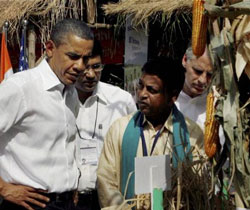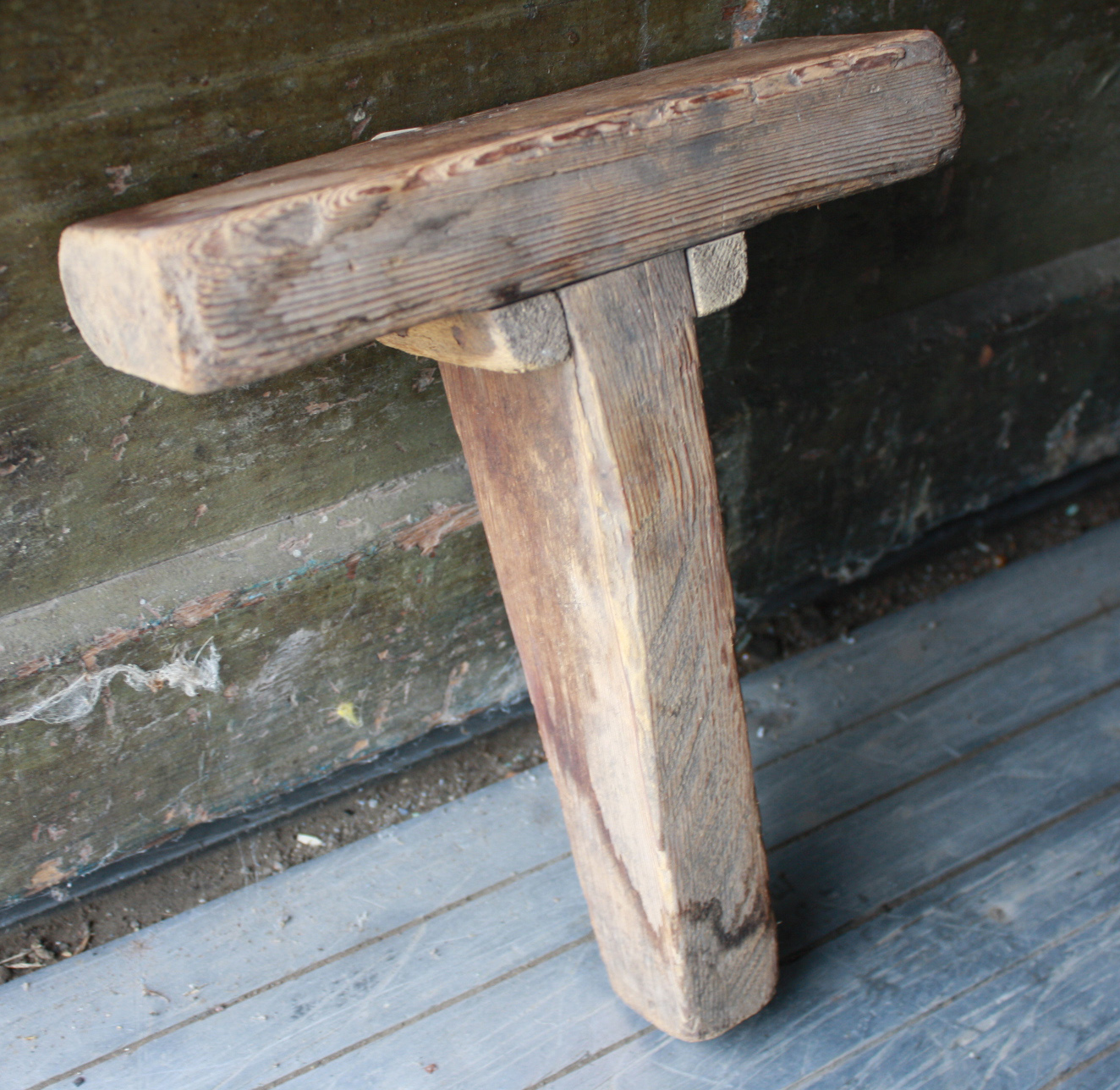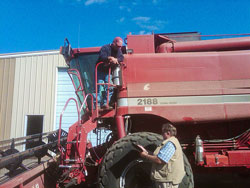Even right here in the very heart of America’s heartland people are still amazed that farmers are so technologically advanced.
A great feature for the Kansas City Star spotlights precision farmers with an appropriate sense of awe. “The final frontier isn’t space, but the corn, soybean and wheat fields of the Midwest. Farmers across the heartland are using GPS-based precision agriculture to boost efficiency, increase yields and protect the environment.”
That includes tractors that drive themselves and tell when they need service, instantaneous wireless communications for marketing, and data management tools.
Someone who has not set foot on a farm in the past decade or so probably would be surprised at how high-tech farming has become. The change is similar to the way personal GPS devices have replaced road atlases for navigation. “If you know where you are going, GPS will direct you there,” said Barry Nelson, manager of media relations for John Deere at its marketing center in Lenexa. “Research shows that in the past, a farmer may have as much as a 10 percent overlap in field operations. By using a GPS system, a farmer can get to sub-inch accuracy and eliminate that overlap. This reduces the number of passes over the field, which saves fuel, makes better use of horsepower, and reduces the environmental footprint and operator fatigue.”

 “Together, we can strengthen agriculture,” Obama said in his address to members of both houses of the Indian Parliament. “Cooperation between Indian and American researchers and scientists sparked the Green Revolution. Today, India is a leader in using technology to empower farmers, like those I met yesterday who get free updates on market and weather conditions on their cell phones. And the United States is a leader in agricultural productivity and research. Now, as farmers and rural areas face the effects of climate change and drought, we’ll work together to spark a second, more sustainable Evergreen Revolution.”
“Together, we can strengthen agriculture,” Obama said in his address to members of both houses of the Indian Parliament. “Cooperation between Indian and American researchers and scientists sparked the Green Revolution. Today, India is a leader in using technology to empower farmers, like those I met yesterday who get free updates on market and weather conditions on their cell phones. And the United States is a leader in agricultural productivity and research. Now, as farmers and rural areas face the effects of climate change and drought, we’ll work together to spark a second, more sustainable Evergreen Revolution.”
 If you’re not a tech head, ISOBUS talk may just be a flyover term that causes one’s eyes to glaze over. In reality, it’s a great technology standard that is working toward having all electronics of all implement brands and colors speak the same language.
If you’re not a tech head, ISOBUS talk may just be a flyover term that causes one’s eyes to glaze over. In reality, it’s a great technology standard that is working toward having all electronics of all implement brands and colors speak the same language.


 The
The 
 Hopefully everyone reading this will be wearing one of these “I Voted” stickers by the end of today – well, assuming your polling place has them. Mine didn’t this morning and I was quite disappointed. It’s kind of like getting ashes on Ash Wednesday – wearing it is a reminder to others of what day it is.
Hopefully everyone reading this will be wearing one of these “I Voted” stickers by the end of today – well, assuming your polling place has them. Mine didn’t this morning and I was quite disappointed. It’s kind of like getting ashes on Ash Wednesday – wearing it is a reminder to others of what day it is. 